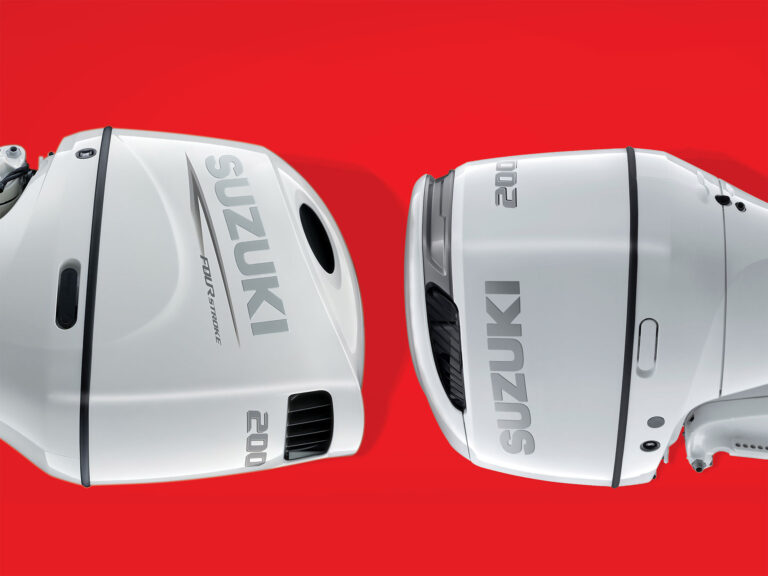When you buy shrimp, which by their name (coming from the Middle English shrimpe, meaning “pygmy”) denotes something small, they usually start at large, then go to jumbo, and then finally colossal. Who are they trying to fool? If the little crustaceans were really colossal, they’d be lobsters — and cost even more.
While this naming system might be ridiculous, at least the shrimp industry has a standard of measurement that you can depend on. Which is more than you can say about boats.
Ever stand on a “48-footer” at a boat show and notice that it has the same amount of room as the “44” next to it? What those numbers are loosely hinting at are the boats’ overall length, or length overall (LOA) in naval-architect speak. It’s a measurement that is supposed to be done from the foremost part of the boat to the aftermost, taking in anything that is a permanent part of the structure. It’s a tricky dimension, yet it’s one that builders love.
They can take a 44-foot boat, add a swim platform and bow pulpit, or add some bow overhang, and call it a 48. Four of those feet won’t be of much use, and the real boat you sit in is still only a 44-footer, but that’s OK … and legitimate. That is, if you know where those extra 4 feet are coming from, such as bolt-on pulpits or platforms.
The strict interpretation of LOA is to include only parts that are molded into the hull or deck. This is the standard that was adopted by the American Boat and Yacht Council back in 2003 (Standard S-8). We applaud the ABYC for its attempt to “establish uniformity in describing boat dimensions.” And we also applaud the builders who follow this voluntary standard. But even if all builders played it straight, LOA is still not much help when shopping. There are a lot of parts sticking out on some boats that don’t account for its interior space, which is what most of us care about when making comparisons.
I’d suggest using displacement, which is a measure of volume, and a reliable indicator of a boat’s true size. Displacement is confusing because, even though it represents volume, it’s given in pounds. That’s because a boat will settle into the water until it has “displaced” (taken up the same space as) a volume of water whose weight equals that of the boat. Seawater weighs 64 pounds per cubic foot. So as long as there is enough hull to push aside a cubic foot of water for every 64 pounds of boat weight, it will float. Another way to look at it is that for every 64 pounds a boat weighs, it needs to make a hole in the water that is a cubic foot.
True, displacement tells you only how much boat is in the water. But, in general, the more boat there is below the water, the more boat there will be above. In other words: more displacement, bigger boat. That’s why displacement is the best way to compare size. It’s also the best way to compare prices. Which is why the next time I see you outside the inlet, I’ll ask if you bought your boat by the pound, and not by the foot.









